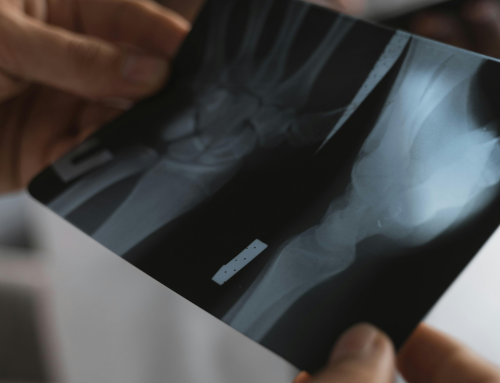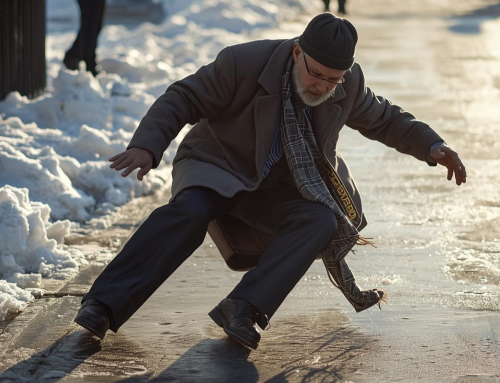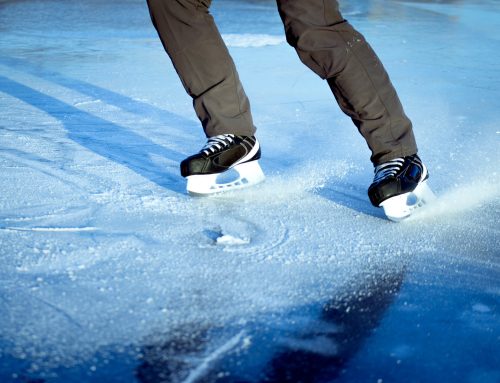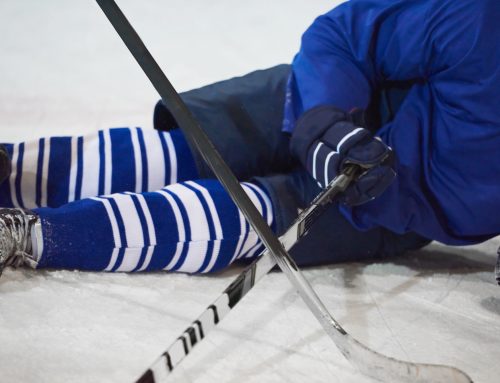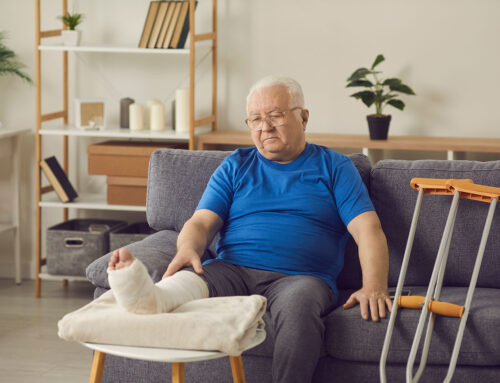There aren’t many bones in your ankle, and when one of them is fractured or damaged, it can put a lot of stress on your body. It isn’t just your physical body that suffers; you’ll also have to combat frustration and vulnerability. Not being able to move around as quickly as you could the week before can take some time to get used to. It can be equally a mental challenge as it is physical.
Always keep in mind that following your physician’s orders is crucial – no matter what. Beyond that, there are a few things that you can do that can assist with the healing process of your broken ankle.

Tips for Healing from a Broken Ankle
Rest
Rest, rest, and more rest. So much rest you’ll likely be sick of it. Your doctor is going to recommend a recovery roadmap before you’re back to pre-injury living. Broken bones need to be set properly and have time to mend. Staying off your feet is imperative to the long-term health of your ankle. For many people, this is the most challenging part of the recovery process but also the most necessary.
Staying in bed for a few weeks might sound ok at first, but it doesn’t take long before you are anxious to get moving again. Embrace the slower pace during this time. Catch up on shows you’ve been adding to your watch list, call friends and family you’ve been meaning to talk to, and read those books you keep putting off.
Create a schedule of time slots for specific activities and stick to it. This will help the time to pass by quicker and keep you from overindulging in one particular thing. You can only watch so many hours of television.
Along with rest, make sure to keep your ankle elevated. Something as simple as a firm pillow placed under your foot will work great. Try to move your ankle as little as possible during the resting phase.
Nutrition and lifestyle habits.
Having the motivation to cook a healthy meal and remember to drink enough water can be tough enough on a good day. Doing so while recovering from an injury can be pretty tricky. It can be easy to lean on fast food or microwave meals if you struggle to move around the kitchen. However, you can give your body a boost by prioritizing your diet.
Try to eat plenty of dark leafy greens, lean meats, and yogurt or nuts for a snack. Supplements can help, but make sure to talk to your doctor before you start taking them. If you go the supplement route, you’ll want to bookmark our past blog for more information regarding bone health nutrition.
If you are a smoker, cutting back or even quitting overall can help your recovery time. Nicotine is known to slow bone growth and blocks your body’s ability to absorb calcium. With the long list of other hazardous reasons, it may be an excellent time to consider giving it up for good.
After a major injury, your body will send extra nutrients to the area of the break. The best thing you can do is give your body a boost, ensuring your body has these nutrients is one way to help your recovery along. Calcium, Vitamin D, and protein will be extremely beneficial in helping your body heal the fractured bones.
Exercise and post-immobilization.
If your ankle was put in a hard cast, once it comes off and your doctor gives the ok, you can begin exercising your ankle. Don’t go signing up for any marathons just yet. It won’t be easy at first, but physical therapy and some simple stretches significantly help increase the flexibility and strength of your ankle. Always make sure you are following the instructions and guidelines given by your physician.
Every person heals at their own pace and is ready for exercise on their unique timeline. You will want to stretch your ankle as soon as you are able. Stretching improves your range of motion and begins getting your ankle ready to be used again. Something as simple as sitting on the floor with your legs stretched out in front of you and moving your toes up toward your head can start you down the path to full recovery.
Recovery time for a broken ankle varies for each injury and from person to person. Still, it typically takes between 6 to 10 weeks to begin walking on the injured ankle and about 6 to 8 months before you can participate in sports or other physical activities.
Using a non-invasive ultrasound device during your recovery process can benefit you with faster healing. Check with one of our experts to determine if this would be a great addition to your treatment plan and decrease your healing time by up to 38%.
Do you have any broken ankle stories? What tips could you share about dealing with the inability to move for an extended time? How did you keep yourself occupied? We would love to hear from you about how you handled your recovery. Share your story in the comments below.

